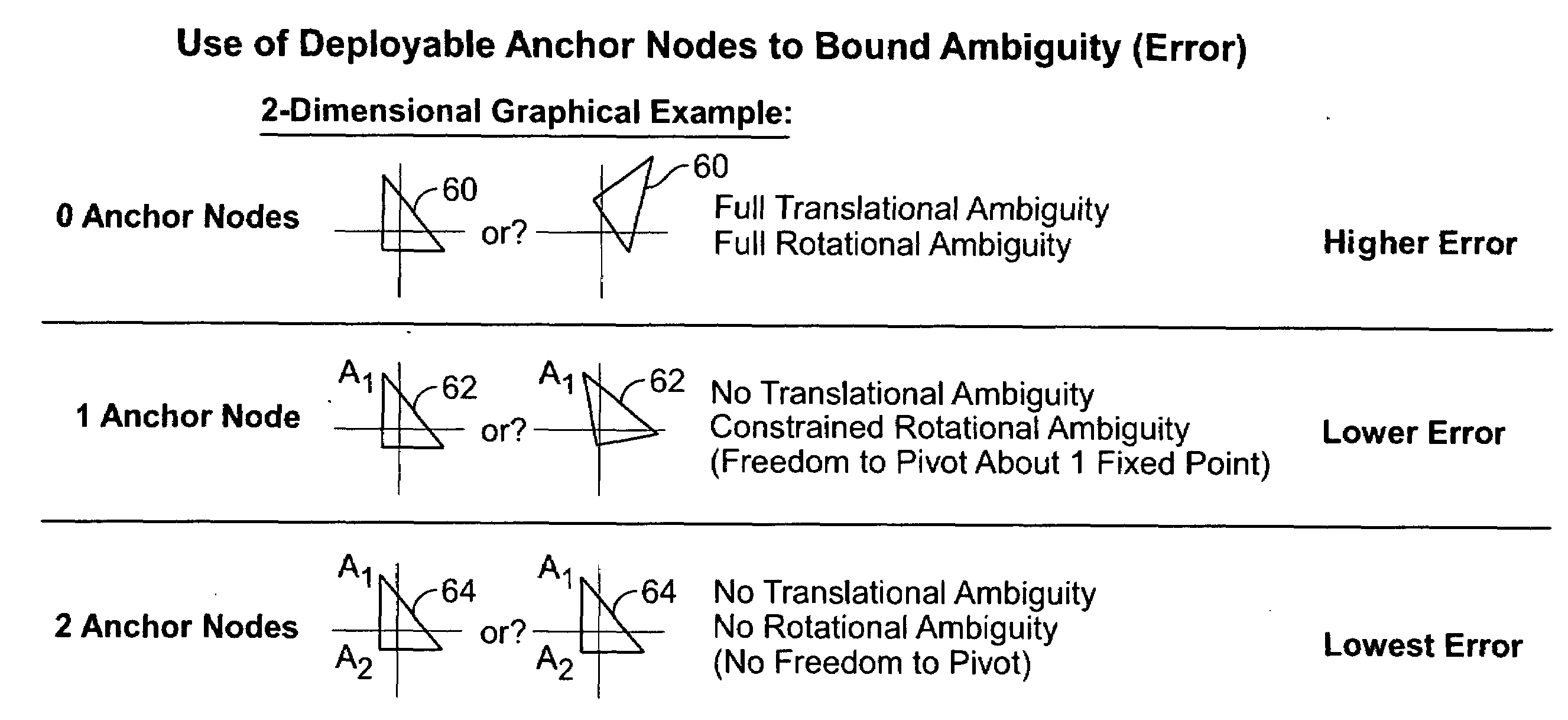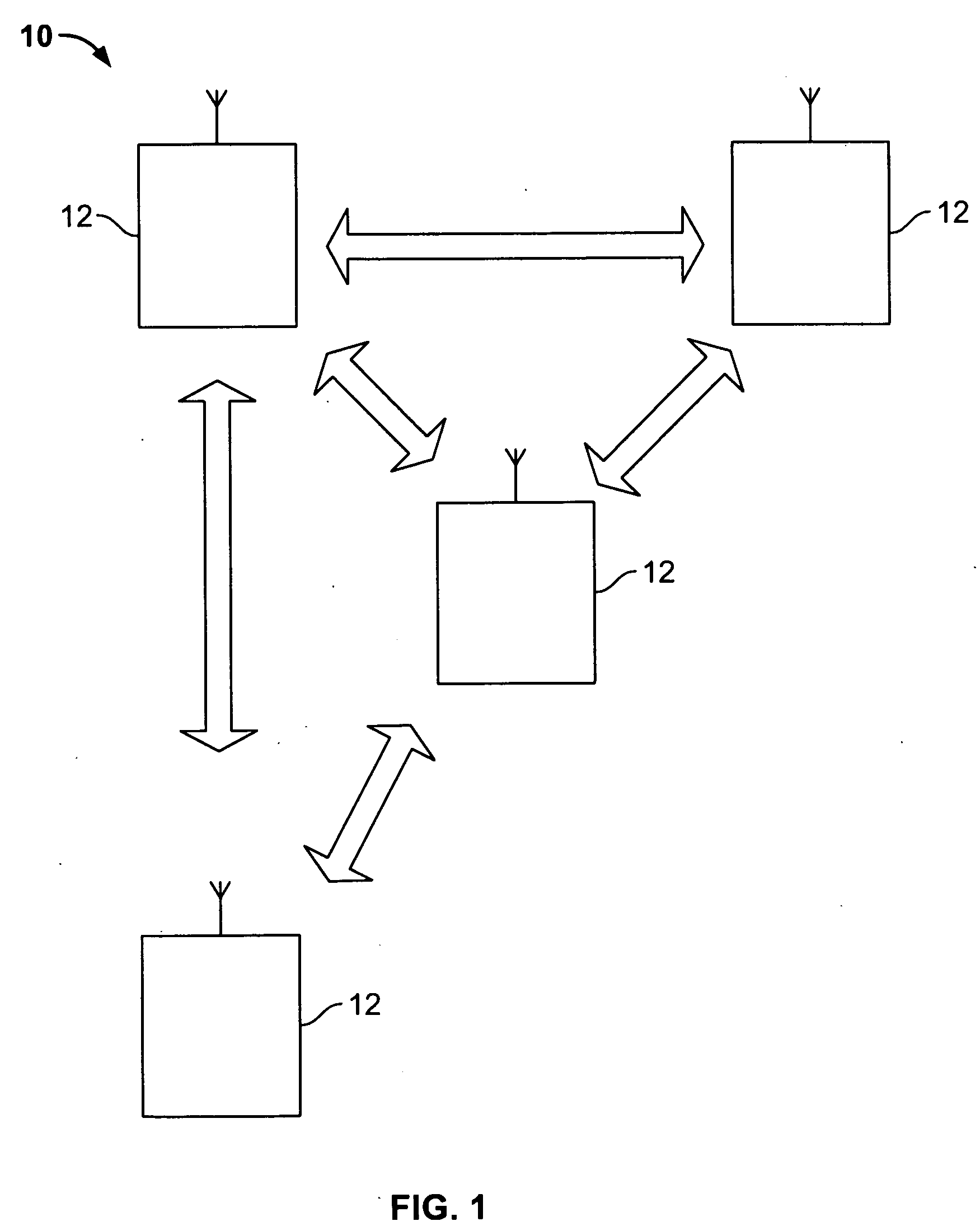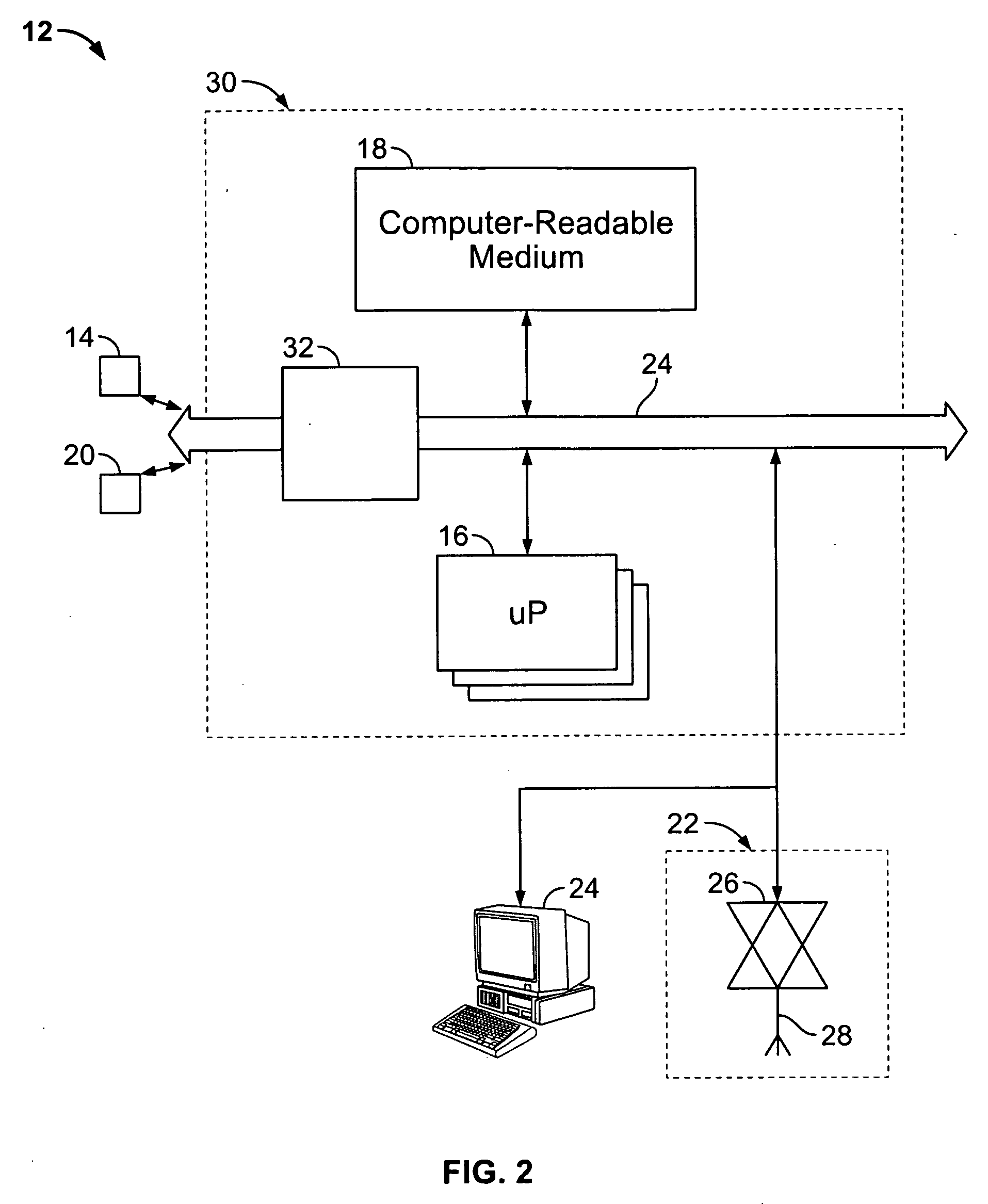Distributed iterative multimodal sensor fusion method for improved collaborative localization and navigation
a multimodal sensor and fusion method technology, applied in direction finders, instruments, etc., can solve the problems of inability to meet the infrastructure requirements of techniques, weak gps signals, and inability to locate people/navigable vehicles, and achieve the effect of improving position accuracy
- Summary
- Abstract
- Description
- Claims
- Application Information
AI Technical Summary
Benefits of technology
Problems solved by technology
Method used
Image
Examples
Embodiment Construction
[0031]Referring now to FIG. 1, a navigation system for determining the position of at least one node in GPS-denied environments is depicted, constructed in accordance with an embodiment of the present invention, generally indicated at 10. The system 10 includes an n-node sensor network comprising a plurality of nodes 12 (people, objects, navigable entities) which communicated with each other wirelessly. In a preferred embodiment, there is no one central node. Each of the nodes 12 determines its own position by means of local position measurement devices and by means of obtaining range measurements between each node 12 and its nearest neighbors(s). Range measurements to neighboring nodes 12 may be obtained by on-board ranging equipment and by receiving / exchanging position measurements wirelessly with neighboring nodes 12. Individual local inertial navigation units (INUs), being subject to drift error, have their position measurements constrained using the exchanged radio frequency (R...
PUM
 Login to View More
Login to View More Abstract
Description
Claims
Application Information
 Login to View More
Login to View More - R&D
- Intellectual Property
- Life Sciences
- Materials
- Tech Scout
- Unparalleled Data Quality
- Higher Quality Content
- 60% Fewer Hallucinations
Browse by: Latest US Patents, China's latest patents, Technical Efficacy Thesaurus, Application Domain, Technology Topic, Popular Technical Reports.
© 2025 PatSnap. All rights reserved.Legal|Privacy policy|Modern Slavery Act Transparency Statement|Sitemap|About US| Contact US: help@patsnap.com



